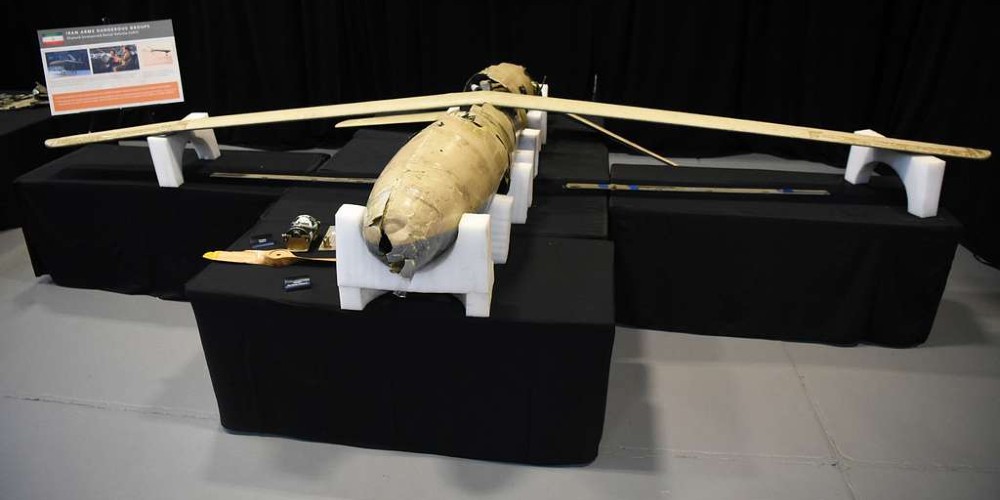Al-Qaeda in the Arabian Peninsula’s Drone Attacks Indicate a Strategic Shift

Published by The Lawfare Institute
in Cooperation With

Editor’s Note: Al-Qaeda in the Arabian Peninsula was once among the most dangerous anti-U.S. terrorist groups in the world, but in recent years it has greatly weakened. AQAP, however, has recently begun using armed drones against its enemies in Yemen, a possible sign of its resurgence. Rueben Dass of the International Centre for Political Violence and Terrorism Research in Singapore examines the group today and assesses the possible reasons for and implications of its use of this new weapon system.
Daniel Byman
***
Between May 12 and July 4, 2023, al-Qaeda in the Arabian Peninsula (AQAP) carried out seven attacks using armed drones in the Shabwa governorate of southern Yemen. The attacks were targeted primarily at members of the Shabwa Defense Forces, which are aligned with the Southern Transitional Council (STC), an organization that advocates for the secession of South Yemen. The exact type of drone used in the attacks remains unclear, though one source noted that in at least one case the drone appeared to carry an explosive projectile.
The attacks were claimed by AQAP on the organization’s social media channels over the course of several weeks. The only other time that AQAP had used drones offensively was in an attack in April 2022, which was mentioned only in passing in their media channels. The sudden uptick in drone use by AQAP and the media attention the attacks have received indicate what AQAP expert Elisabeth Kendall has described as a “worrying escalation.” And the sustained use of the new technology suggests that AQAP has new partners and may be engaged in a strategic pivot.
AQAP’s Decade of Decline
AQAP was formed in 2009 when the Saudi and Yemeni branches of al-Qaeda merged. In 2011, it was considered to be the most active operational affiliate of al-Qaeda and one of the biggest threats to the U.S. homeland. Apart from local terrorist attacks in Yemen, AQAP was known for external operations and plots outside of Yemen. The group was behind several high-profile international terrorist plots, including an assassination attempt targeting Saudi prince Mohammed bin Nayef in August 2009, the December 2009 plot to blow up a U.S. plane with explosives that Umar Farouk Abdulmutallab had hidden in his underwear, and the October 2010 effort to blow up cargo planes bound for the United States using explosives smuggled in printer cartridges.
More recently, AQAP claimed responsibility for the 2015 attacks on the Charlie Hebdo offices in Paris and the 2019 shooting at the Naval Air Station in Pensacola. But the group’s activity declined as U.S. drone strikes targeted its leadership. Anwar al-Awlaki, a prolific AQAP propagandist and operational planner, was killed in 2011, and successive leaders of the organization have also been successfully targeted—Nasir al-Wuhayshi in 2015 and Qassim al-Rimi in 2020.
Today, AQAP has been weakened by sustained counterterrorism efforts and internal strife. Between January and February 2023, three more senior AQAP officials were killed by U.S. drone strikes, including two notable explosives experts and Hamad al-Tamimi, the group’s media chief and leader of its Shura Council.
Recent data suggest that AQAP activity has diminished. The one exception to this trend is an uptick in violence corresponding to several offensives, named “Arrows of the East,” launched by the STC against AQAP in August 2022. The STC offensives primarily targeted terrorist elements in Abyan and Shabwa governorates in an effort to secure the south of the country.
AQAP is also currently hindered by internal conflict. The group is believed to be divided into three factions: a Yemeni faction led by Sa’ad Atef al-Awlaki, the group’s emir in Shabwa province; a Saudi faction led by AQAP leader Khalid Batarfi; and an Egyptian faction led by senior AQAP official Ibrahim al-Banna and the son of the de facto leader of al-Qaeda Central, Saif al-Adel. There seems to be a conflict between the Yemeni and Saudi factions in particular. Batarfi was alleged to have isolated fighters in Shabwa by cutting off finances to them and preventing them from fighting against the Houthis. The policy of not fighting the Houthis might be indicative of an alliance between the Houthis and AQAP, which some security officials have noted.
AQAP’s Strategic Shift
The recent attacks in Shabwa can be seen in three related ways. First, they are a means to boost the group’s image and influence, amid their waning strength in South Yemen. Second, they may reflect a strategic (and possibly temporary) rapprochement with the Houthis. And third, they indicate AQAP’s shift in focus toward the STC.
Reports have suggested that the drones used in the Shabwa attacks were provided to AQAP by the Houthis. Given that AQAP has limited technical capability in developing their own drones, especially after the recent deaths of their explosives experts, external support for sourcing these weapons was probably crucial. The drones were reportedly obtained by Abu Osama al-Diyani, a Yemeni jihadi leader close to Batarfi who maintains a close relationship with the Houthis.
Infighting between Batarfi and AQAP leaders in the southern provinces had led to a cessation of offensive operations there. Unable to conduct military operations in the south, Batarfi instead sought Diyani’s assistance to obtain drones and begin using them to carry out attacks. The drone strikes are seen as a new way for the group to conduct attacks despite diminished operational capacity, and as a significant image booster. These high-profile attacks demonstrate the strength of the group and boost troop morale. One report also suggested that the drone operations are an effort by Batarfi and leaders close to him to ensure their survival within the group.
If the drones were in fact provided by the Houthis, this would clearly indicate that AQAP has shifted away from its conflict with them. Though AQAP fought the Houthis for most of the past decade, its recent offensives against the group have not been particularly effective and this has been exacerbated by the group’s financial difficulties. Historically, AQAP and the Houthis have maintained some level of pragmatic, tacit cooperation. The Houthis have at times provided AQAP with refuge for some of their leaders and weapons. The apparent cooperation also goes beyond the possible provision of drones—the groups also carried out a prisoner swap in February 2023. For their part, the Houthis benefit from continued instability in South Yemen. AQAP’s operations provide plausible deniability for the Houthis’ own operations and provide an excuse for Houthi forces to continue their military operations in the area in the name of counterterrorism. Whether this current AQAP-Houthi arrangement is just a short-term strategy remains to be seen.
The decision by AQAP to shift their attention to the south, Shabwa and Abyan in particular, coincides with the group’s refocusing of its efforts against the STC forces. One reason for this shift may be the relative strength of their current capabilities in the area. Shabwa and Abyan governorates represent historical strongholds for AQAP, and data suggest that members of the group seem to have mostly retreated to those provinces. Sources also suggest that the group has little operational capability in other provinces. The focus on the STC might also have ideological motives, as AQAP has always viewed the southern forces as apostates.
In January 2023, Batarfi, the head of AQAP’s Saudi faction, met with AQAP leaders asking them to prepare for attacks against the STC in the south and halt any attacks on the Houthis. In February 2023, Awlaki, the head of the Yemeni faction, issued a call to tribesmen from Abyan and Shabwa to join AQAP against the STC and Arab-led coalition. The drone attacks may indicate that AQAP is ramping up their retaliatory efforts against the STC’s Arrows of the East campaign, as part of their own offensive, “Operation Arrows of Righteousness,” which they announced in September 2022.
This strategic shift away from targeting the Houthis and toward the STC is in line with directives from al-Qaeda Central. Saif al-Adel has advocated for an increased focus on attacks against Western interests, Saudi-led coalition forces, and anti-Houthi forces, and is seen to have an increasing influence on AQAP. Adel has attempted repeatedly to move to Yemen and shift al-Qaeda Central’s command there.
The Dangers of AQAP-Houthi Cooperation
The recent use of drones by AQAP in Shabwa is likely an attempt by the group to remain relevant despite its waning strength, and to reassert its influence in South Yemen. The attack may also be a sign that AQAP is shifting in its priorities to the south and away from hostility with the Houthis. Whether this will be a new trend in AQAP’s playbook is something to be watched closely. This sudden, sustained use of drones almost certainly requires some form of external support for sourcing the technology. If the Houthis are in fact providing AQAP with drones and this relationship continues, possibly more sophisticated drone attacks are likely in the future. The Houthis have significant experience carrying out sophisticated drone attacks, and selective cooperation between the two groups may open channels for additional transfers of technology and weapons from the Houthis to AQAP.
The author would like to thank Mina al-Lami from BBC Monitoring and Daniele Garofalo for their insights, and Ahmad Helmi bin Mohamad Hasbi from RSIS for his assistance in translating Arabic texts and articles.


-(1).jpg?sfvrsn=b91ff6a6_7)

.jpg?sfvrsn=d45482bc_5)
